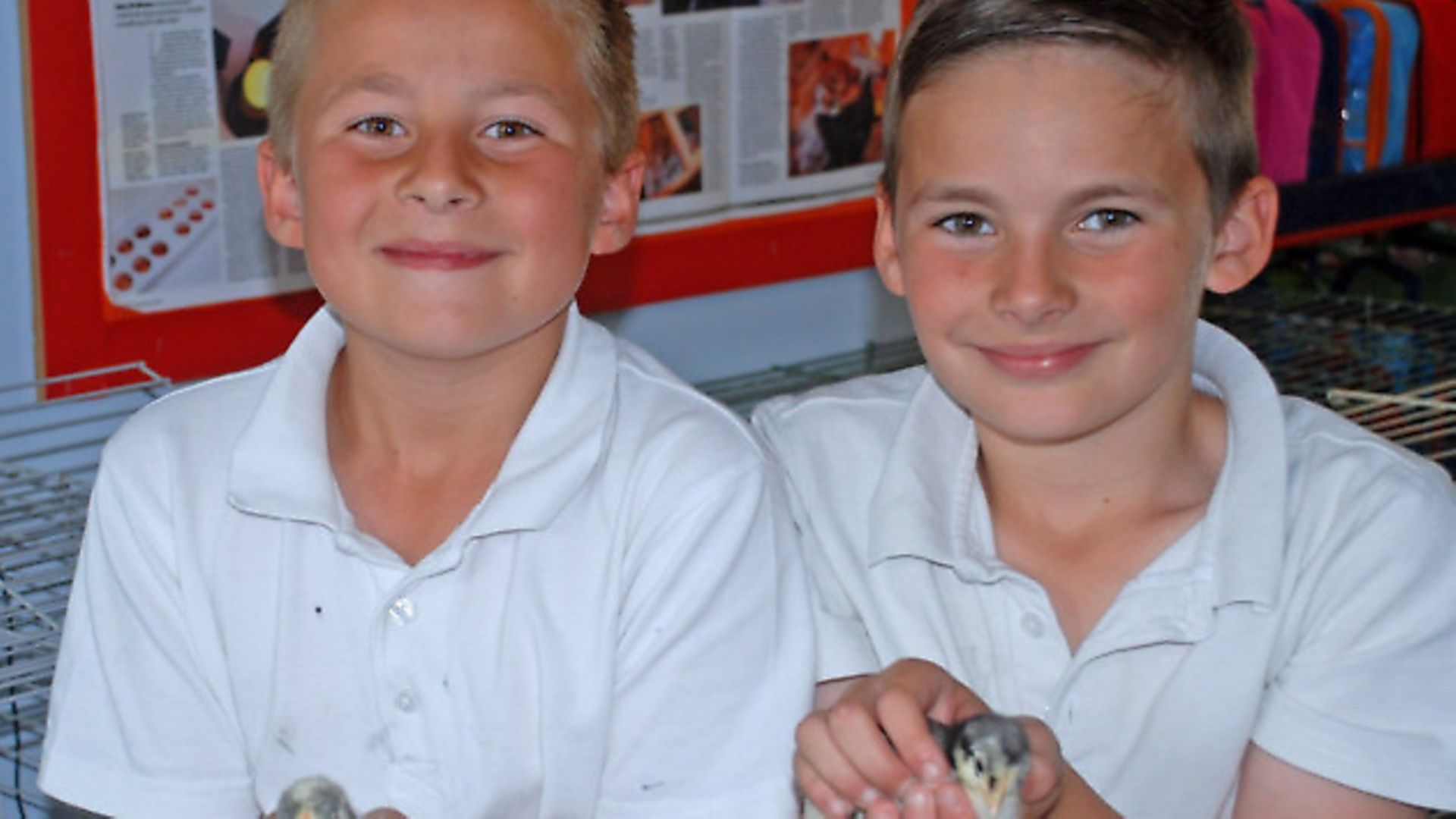Chicks have lots to teach children about many aspects of life. Your Chickens writer Sam Bowles reports from a school in West Sussex

When children at Rustington Community Primary School in West Sussex see their first chicks, the reaction tends to be predictable. ‘They’re cute and fluffy!’ is the popular cry from delighted pupils in the reception year children. Yes, they are! Their enthusiasm is infectious.
The children in reception class have had very special lessons this term. Set up by teacher Natasha Lawrence and teaching assistant Lisa Leggett, the hatching of chicks was the second part of a Learning Journey devised for the children following on from the theme of The Farm.
Designed to cover many parts of the curriculum, it aims to teach the children where their food comes from, chick development and the lifecycle. It is also a personal and social exercise, teaching care of animals, how to hold and be gentle. The project has been five years in development and varying degrees of success meant that a good quality incubator was purchased and the whole set-up refined to fully integrate the school curriculum.
Both Natasha and Lisa explained everything to the children as the project has progressed. “We discussed how chicks develop in the shell. A plastic egg set was used which shows growth day by day inside each egg. Each morning we would look at the day’s egg and check the incubator,” said Lisa. “Every day they were all so keen to see what the inside of the next egg looked like and to imagine this in our own eggs.”
The big hatching day arrived. Natasha said: “The first eggs hatched overnight, before the school day started, and some during day while the children were there. We took out the broken shell and used it to explain how the chicks break out of the shell with an egg tooth and how they eat the interior of the shell to survive their first 24 hours.
“The children were all understandably very excited and the first question they all had was ‘when can we hold them?’ The excitement spread throughout the school and everyone wanted to take a look!”
Lisa said there was a discussion about the chicks’ lifecycle: “We used the chicks as a way to show how they grow very fast and humans much more slowly. We got the children to understand that a chick was fully grown at 20 weeks, whereas at 20 weeks we are still tiny babies.” Welfare was key too. “We wanted the children to understand that they are responsible for keeping these little creatures safe, well fed and watered and their home kept clean. There was never any shortage of children wanting to help with that!
“We also devised a Question Box. Each day we looked through it and answered them. Questions ranged from ‘How soon do they get feathers?’ to’ How long do they live?’ It’s a good way to encourage punctuation and spelling too,” said Natasha.
Some of the children chatted about their experiences. Eva Morgan-Mills, 5, said: “Their feathers have grown very quickly and have changed colour from yellow to black. They have an egg tooth on their head – it gets them out of their shell!”
Jasmine Scott-Palmer, 5, said: “Watching them grow is really exciting. I love feeding them. One day one sat on an apple!”
Hamish Priest, nearly 5, said: “Stroking them is best but I also like to watch them and make sure they are safe.” The kindness of the children and the care they all take with the chicks is obvious.
Twins, Jacob and Samuel Flint, were involved in a previous hatching. Jacob remembers it fondly. “It was great fun, especially when they first hatched. They were all a bit wet but soon were fluffy and cheeping loudly. We had a competition to name them too, names like Barry Scott and Toffee Sunshine!” Samuel said. “I thought that eggs just hatched out anywhere. I didn’t realise that they needed a certain temperature and the birds had to be fed special food, like chick crumb. One day someone even gave them mealworms – some of the children thought it was gross!”
The chicks, a mixture of Pekins and Welsummer bantams, were later moved off site until they are older. “They will come back when they are about six weeks so the children can see how they have grown,” said Lisa.
Deputy head Faye Hawkins said: “This project is linked with real life learning, covering seven areas, each with links to science, literacy and communication. The raising of the chicks hits a number of key areas, along with social awareness, feeding and care. I believe there is not the same impact with just pictures and verbal learning.”
Head Nick White agreed and would like to maintain the enthusiasm. “I have been looking at other schools within our group, one of which keeps quail and ducks permanently on site. We are learning from them with a view to one day taking this project much further.”
Image(s) provided by:
Archant







